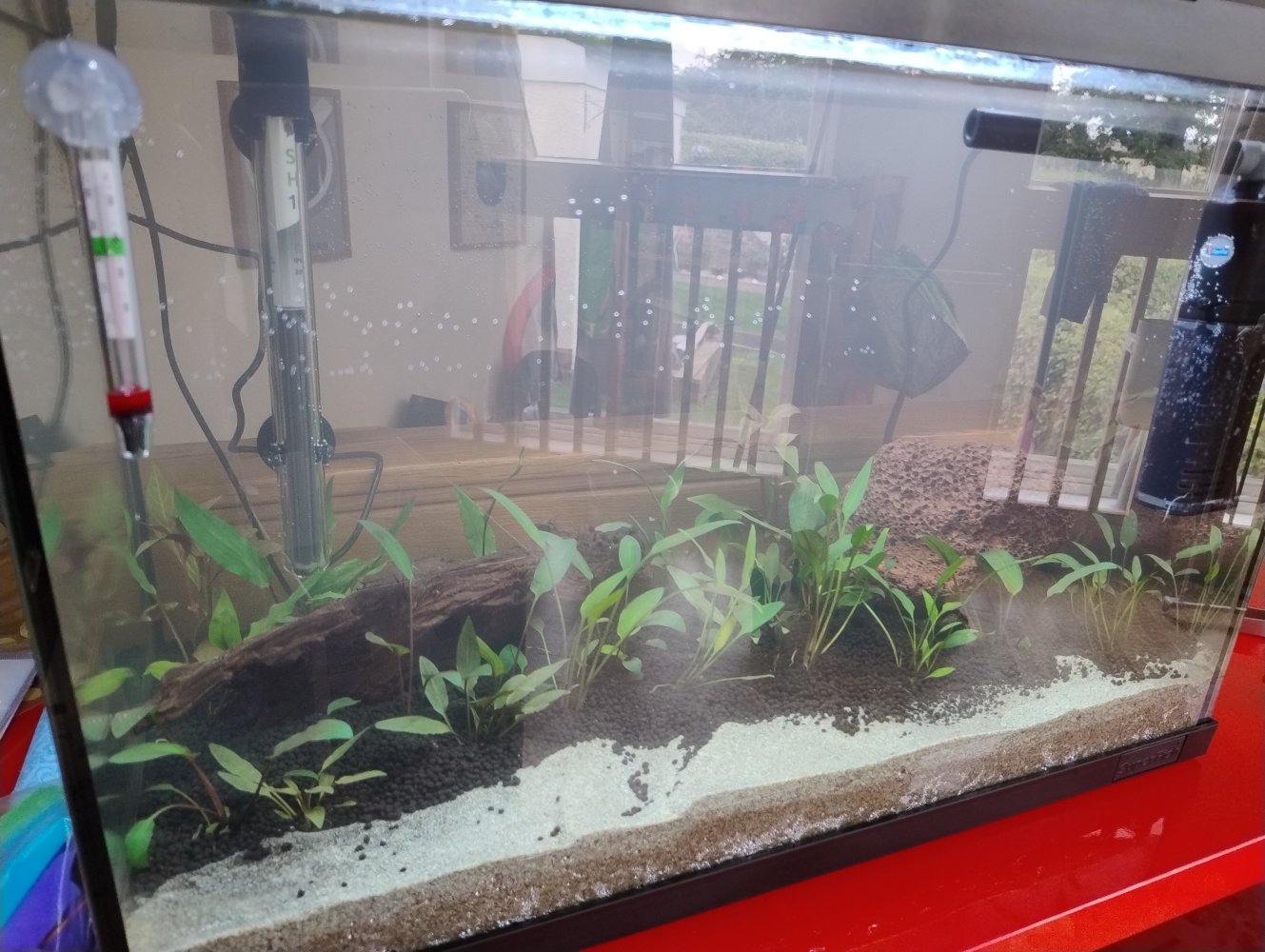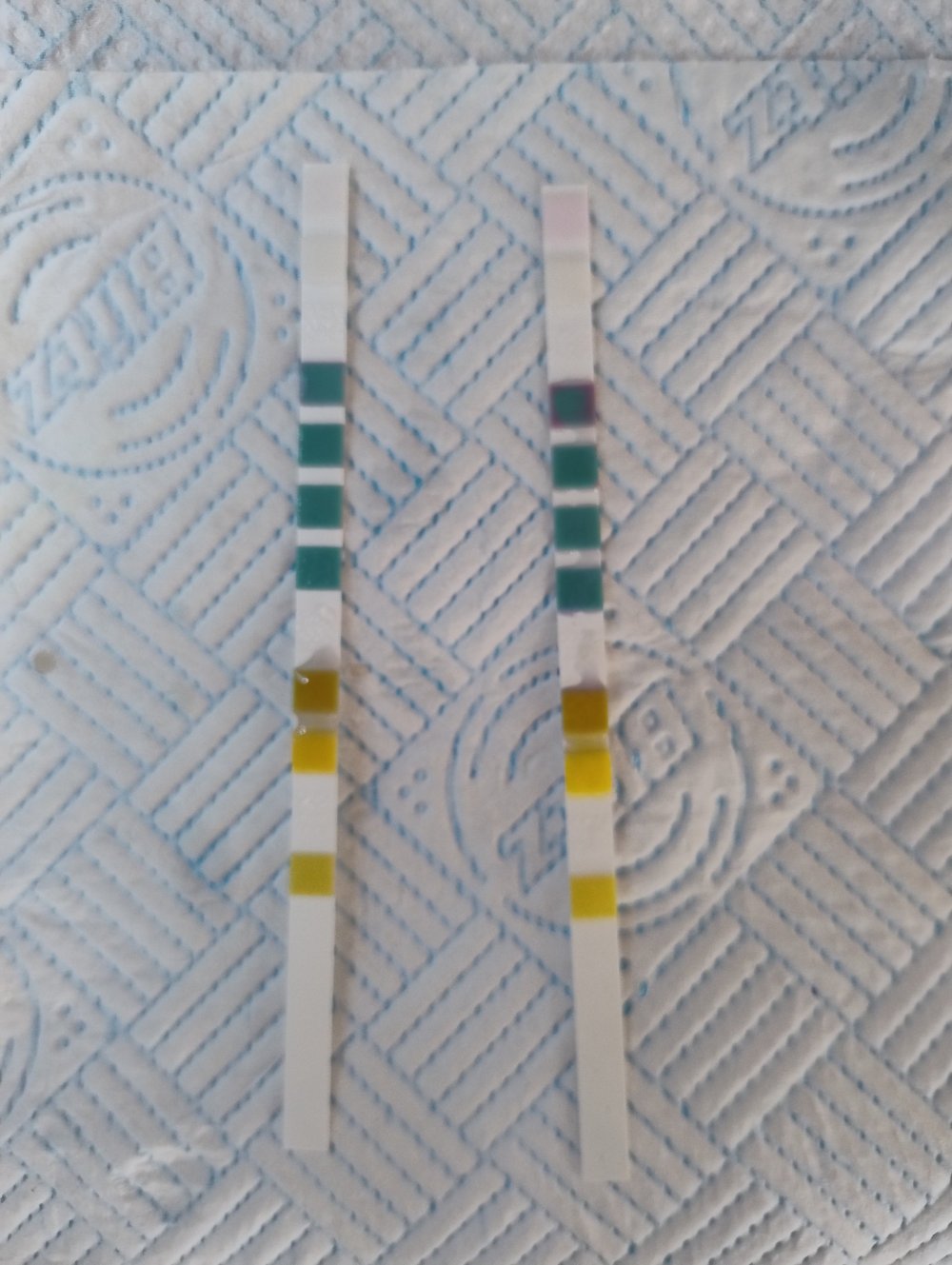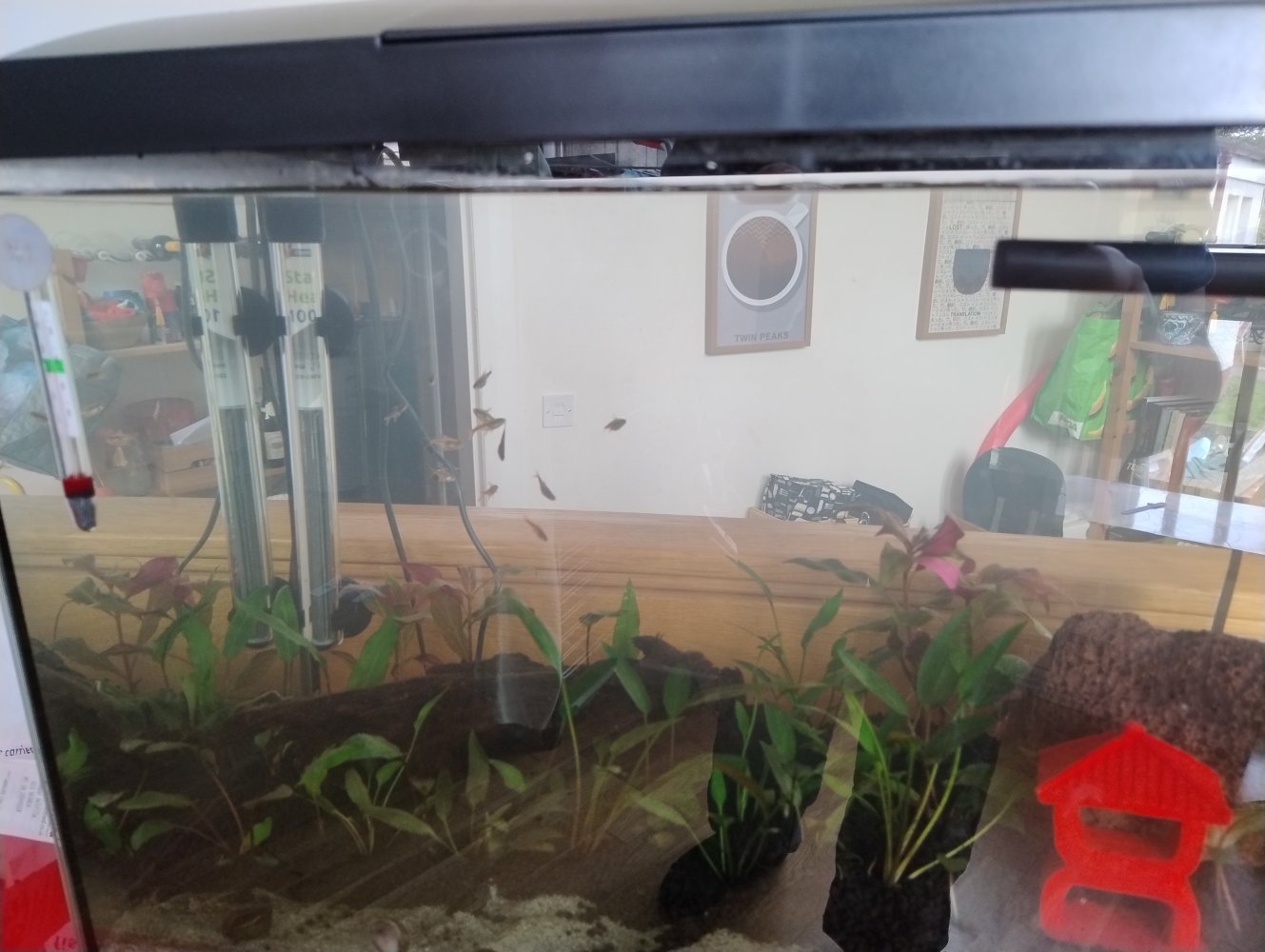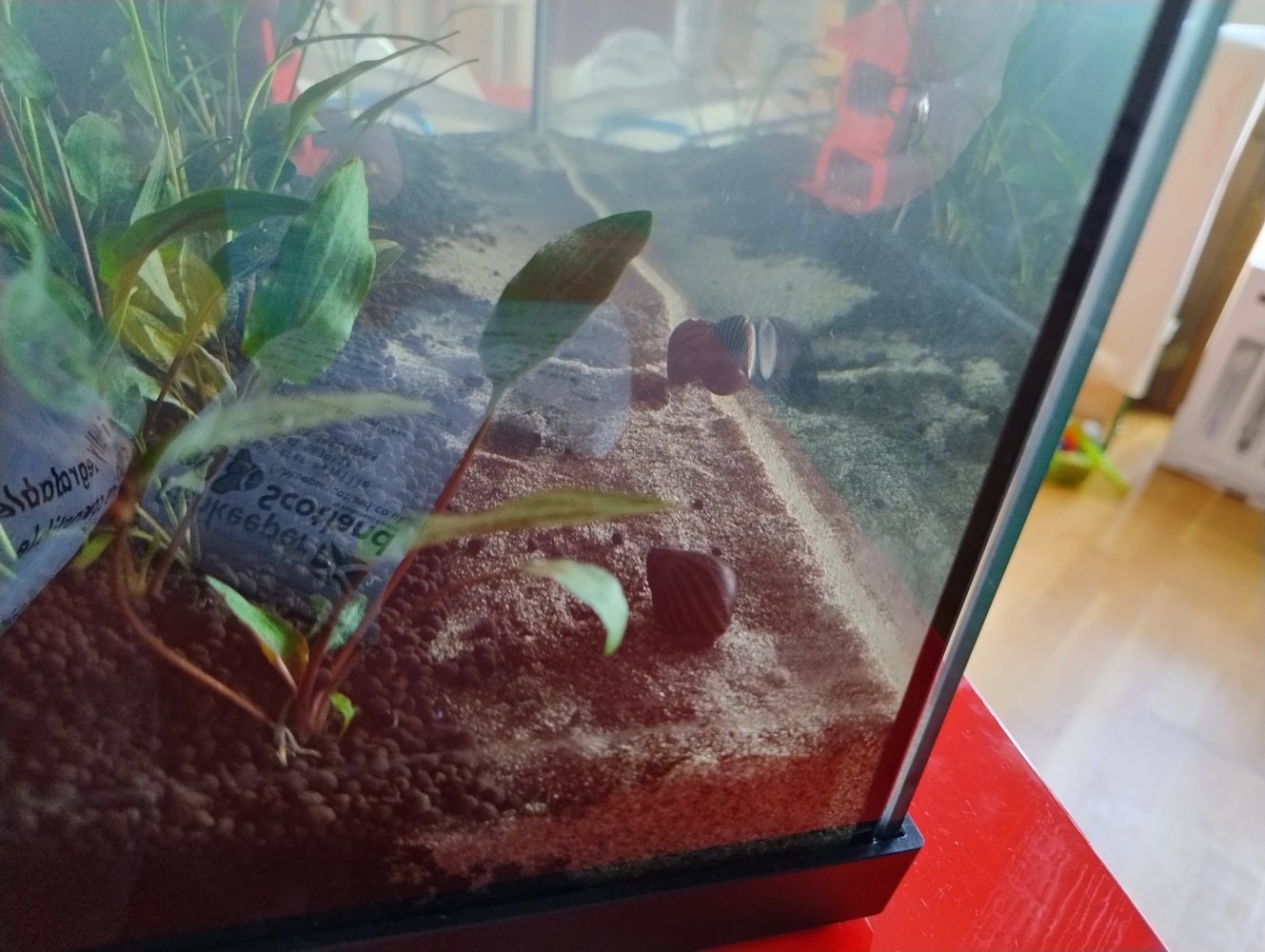itudela
Member
Hi there! Just got into fishkeeping and (an attempt to) aquatic landscaping after thinking for some time with the missus about getting an aquarium for the wee one (both of us are allergic to cats).
The wee one is only 2 years old, so we would like him to grow seeing how we take care of the aquarium (both livestock and plants) and eventually take over from us... if we let him!! Which I am already starting to think that it won't be happening...
Anyway, the person that told me about UKAPS is an active member here (and also works at a shop near Edinburgh, which is why I won't mention their name for the time being!). They suggested to create a journal so people may share some tricks or two... I guess that's what I'll do next?
So... A week ago we set an aquarium for the first time. The setup is a SuperFish Start 70 Tropical Kit we got from a well known shop in Edinburgh. We put speckled sand in the front area and the rest was covered with Fluval stratum to create some contrast. A big porous rock, a chunk of driftwood with a cave-like void and 8 pots of plant later (forgot to write down the species - will definitely not make it into the Featured Journals' section), and it was more or less ready to go.
Two days later, and it was looking reasonably well and settled, besides the bit of bacterial bloom you could see in the images. By the way, this week I have been using Microbe-Lift Plants Green and Bio CO2 fertilisers (that may be giving away the shop where I got the whole setup) as indicated in the instructions.

The following day I went to the shop, got some JBL strips and checked the aquarium water (right strip below): on the acidic, no alkalinity AT ALL, some wee hardness and some nitrate showing up a bit. I checked the tap water (left trip), and it's easy to see where the acidity and low alkalinity and hardness is coming from: water in Midlothian can be extremely soft! I also brought some water to the shop when I went to buy the strips, and the feedback was pretty much the same: for the species I had in mind (ember tetras and pigmy corys, as I would like to have one or two nice shoals of different species), this should be fine...

So today we went for the first livestock for the aquarium. As planned, we got 12 ember tetras, and while discussing with one of the chaps about some shrimp (we'll wait a few more weeks to have some algae) and pigmy corys (maybe the next weekend?), I thought about some snails for the dead plants; zebras seemed the best option to avoid loosing the plants, so we got 3 of them without much thinking... And without showing my water results to the chap I was talking to (my mistake, I did mention one of his colleagues tested my water a few days ago and the results were fine...). The tetras and snails are now in the tank, and whereas the tetras seem ok (other than causing a bit of another mild bloom?), I am starting to get concerned about the snails...


Trying to find more about the snails (had not done any research), I am starting to worry about their shells. pH is on the low side, alkalinity is non existent and hardness is really low. I am stopping the Bio CO2 to see if the pH starts to rise slowly (I hope the ammonia from the fish may also help on that while helping with the bacteria) - today I moved a couple of plants around and noticed the roots have grown quite a bit, so I don't think stoping the Bio CO2 fertiliser will cause a big issue. I will go to the shop tomorrow to have a chat and perhaps get some crushed coral...
Anyway, this is the first post of many? Few? We will see... Any suggestions are more than welcomed!
Last edited:



